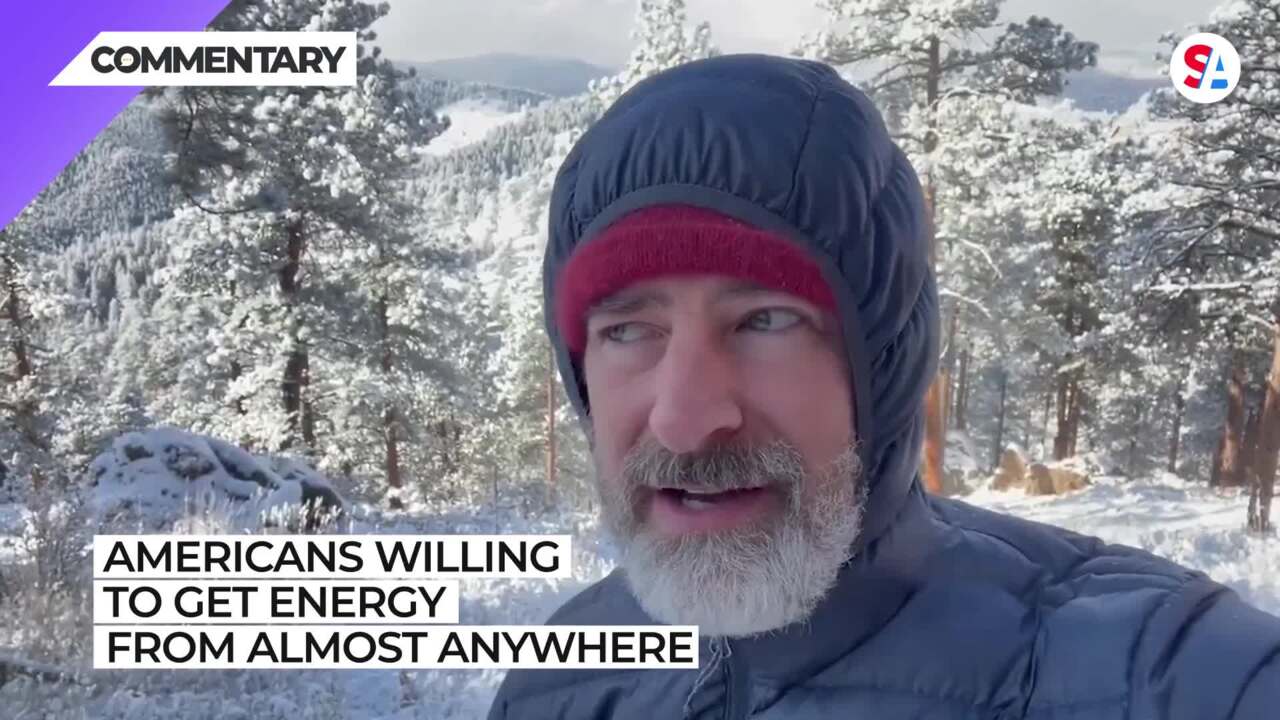
Commentary
-
Our commentary partners will help you reach your own conclusions on complex topics.
Hello, everybody from chilly Colorado. I thought this was a great time to talk about winter in Europe. Now the Europeans have lost their primary source of natural gas from Russia. And what they’ve been doing to this point is paying about ten times market price in order to fill up their storage.
The problem is that storage is just that, storage. It’s not even an emergency supply, it’s part of their normal supply system for the winter. So stuff comes in via pipe, and in the summer, demand is lower, and then in the winter, they get about two-thirds of their supply from pipe and about 1/3 from storage.
Well, they’ve lost half of the stuff that used to come in from pipe from the Russians. So they’re going to be drawing down more aggressively.
Next winter is going to be really ugly for Europe. And by the time we get to next winter, it’s going to be really ugly, because the pipes from Russia are in many cases now destroyed. And so they’re not going to be able to top off their storage at all without paying absolutely exorbitant prices.
Now, there are a couple of ways that you can kind of square the circle here. The first one is bring in natural gas from new sources. Now the pipes are all maxed out. So that has to be with liquefied form.
Normally natural gas is transported by pipe through fixed infrastructure. But you can, at the point of export, freeze the stuff into a liquid, and then load it onto a specialized tanker that then brings it into your consuming zone where it is offloaded, and re-gasified and then funneled back into your system normally.
Now, freezing a gas into a liquid form is as energy-intensive and as expensive as you might think. The Europeans get around that on the emission side by pretending that anything that happens with natural gas before it reaches Europe is not their problem, which is, you know, very par for the course when it comes to European data on carbon. And in terms of energy security, unless you sign a fixed-term contract, that’s usually ten or twenty years, you’re tapping what’s called the spot market. So just individual cargoes that are looking for a home, those tend to be far more expensive.
And the Europeans don’t want to commit to 20 years of natural gas from a source on the other side of the planet. So they’re trying to just have the spot market almost exclusively. And they’re having to pay the price for that. And that is part of the reason why European inflation is so much stronger in many cases than it is even in the United States.
So that’s option one. They’ve been doing a lot of that. Option number two is to shut down demand, whether it’s demand destruction, or purposefully shutting things down, doesn’t really matter. The Europeans have chosen to largely remove natural gas from their industrial space. And so we are seeing huge amounts of industrial closures across the entire industrial space. And this has a lot of consequences.
So the Germans, for example, don’t think of energy in the way that most Americans do. We’re very agnostic about where we get our energy – so Mexico, Canada, Saudi Arabia, Venezuela, if we don’t think anyone is looking. The Germans need long-term contracts with state-owned suppliers, through fixed infrastructure, so they have a degree of stability in their supply. That is not an option right now, because a lot of the pipes are offline.
So when you shut down industrial infrastructure in demand in Germany, you’re talking about something that cuts to the core of their entire industrial model. Because that natural gas isn’t just part of their electricity system, it’s part of their petrochemical system, which is what makes their manufacturing sector possible. So in shutting all this stuff down, the Europeans are choosing, maybe not consciously, but they are choosing a general deindustrialization trend for the entire continent.
No one is making nitrogen-based fertilizer in Europe anymore. No one is smelting aluminum anymore. A lot of the steel foundries are shutting down, auto manufacturers already down by a quarter and is dropping fast. It’ll be gone in less than a year, because remember, next year, they’re gonna have even less to work with.
So we are looking at the collapse of not just the broader European economic model, but the specific German industrial model that allows things like BMWs to exist.
The problem they’re facing this winter is that even the normal backup plan of going to the United States for liquefied natural gas is not really an option. As you can see, it’s a little chilly here in Colorado, it’s chilly in Washington, it is chilly in Texas and Florida. Here, it’s four degrees this morning.
And if it’s cold in the United States, that means we need incrementally more natural gas in order to keep the heat on. And the only swing energy producer that the United States has in terms of power generation is natural gas. Coal is baseload, it takes too long to spin up and spin down. Same with nuclear for safety reasons. And solar and wind you can’t spin up, you get what the weather gives you. And that’s it.
Natural gas is our only flexible fuel source. And well we’re being flexible with it by using it right now. And that means it’s not available for the Europeans at the moment. Now, for the moment, the Europeans had been very lucky. They’re having one of the warmer winters on record even though the United States is having one of the colder ones. And that means they don’t need as much at this moment. But always remember bottom line, the infrastructure that allowed the Europeans to get to this level of storage and have this degree of supply is no longer there. So next winter is going to be far tougher.
And this winter even with high storage levels, and record low temperatures, and a lot of demand shut in, this is already the highest electricity and natural gas prices the Europeans have on record.
-
Hurricane Helene hits US coast, Appalachia and beyond
Hurricane Helene hit Florida and Georgia overnight between Sept. 26 and 27 as a Category 4 hurricane, and accompanying storms will continue reaching deeper into the continental United States today. Dangerous flash flooding from the hurricane, known as storm surge, was some of the worst flooding that the Tampa Bay area has ever seen, and… -
Israel holds upper hand against Lebanon, Hezbollah and Iran
On Wednesday, Sept. 25, Hezbollah launched a ballistic missile at Tel Aviv in retaliation for Israel’s explosive pager attack that blew up devices across Lebanon. Although Israel’s defense systems intercepted the surface-to-surface missile, the attempted strike on Tel Aviv marked a significant escalation by Hezbollah. Since the siege on Gaza began, shortly after the Oct. 7, 2023,… -
The Sinaloa Cartel civil war
Fears of a civil war within the Sinaloa Cartel are growing as violence between competing factions within the cartel continues. The Mexican Army has dispatched around 600 elite troops to Sinaloa to help quell those fears, in addition to roughly 2,200 regular soldiers and National Guard. Watch the above video as Straight Arrow News contributor… -
New Ukrainian weapons hit Russia where it hurts
Ukrainian drones struck a major Russian ammunition depot, triggering a massive explosion that was captured on camera. According to the Ukrainian military, 2,000 tons of munitions had arrived at the depot before the attack. Over the past two years, Ukraine has significantly increased its domestic drone production, allowing it to scale up attacks on military… -
Weighing social costs vs. economic benefits on immigration
Global human migration is one of the defining elements of our current historical era, according to the United Nations. Migrants face both the incentives to leave — forced out by climate change, crime and corruption, extreme poverty or violence — and incentives for where to go, based on available job opportunities and so on. Migration…
Latest Stories
-
 Getty Images
Getty Images
Potential top seeds still making their case for NCAA tournament committee
-
 Getty Images
Getty Images
DOD identifies $80 million in diversity and climate spending
-
 Getty Images
Getty Images
Severe weather threatens Mardi Gras celebrations in New Orleans
-
 Getty Images
Getty Images
MLB spring training: Mixed bag for National League teams 1 week in
-
 Getty Images
Getty Images
Illegal border crossing apprehensions plunge to 8,300 in February: Report
Popular Opinions
-
In addition to the facts, we believe it’s vital to hear perspectives from all sides of the political spectrum.
Latest Opinions
In addition to the facts, we believe it’s vital to hear perspectives from all sides of the political spectrum. We hope these different voices will help you reach your own conclusions.
The opinions published in this section are solely those of the contributors and do not reflect the views of Straight Arrow News.





















Latest Commentary
We know it is important to hear from a diverse range of observers on the complex topics we face and believe our commentary partners will help you reach your own conclusions.
The commentaries published in this section are solely those of the contributors and do not reflect the views of Straight Arrow News.
Dr. Frank Luntz
Pollster and Political Analyst‘Biased’: What Americans think of ‘mainstream media’
‘Getting rid of them’: Americans discuss Trump and immigration
‘Woke’: Why some Biden 2020 voters backed Trump in 2024